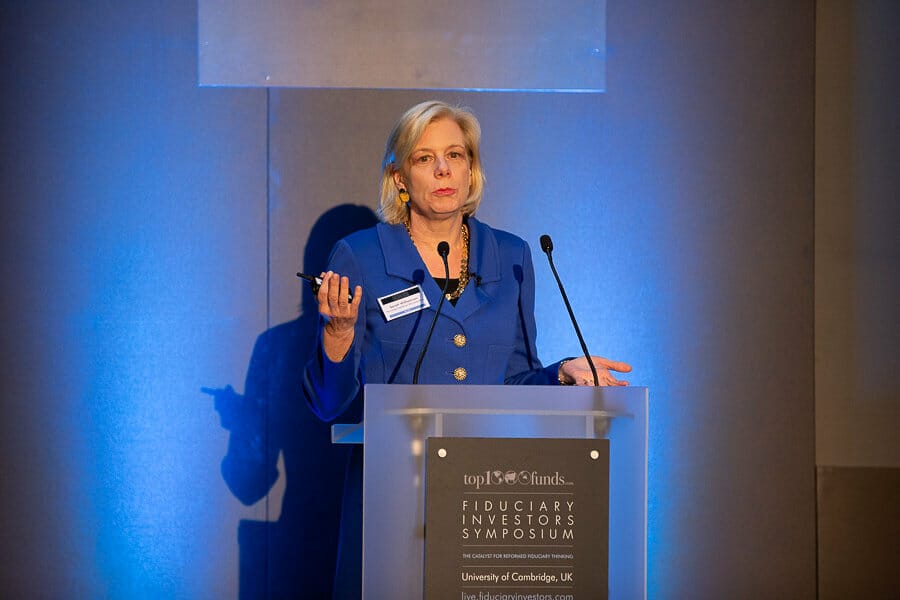Thinking and acting long-term and holding their service providers to account on long-term risk behaviours and measures, is one of asset owners’ most enduring challenges. Speaking at the Fiduciary Investors Symposium at Cambridge University a panel of experts highlighted important tools asset owners can deploy to ensure they stay focused on the long-term.
Sarah Williamson, chief executive, Focusing Capital on the Long Term, a US-based non-profit consortium of asset owner and managers dedicated to encouraging long-term behaviour, urged investors to refine and sharpen their beliefs. “At many funds, if you ask different members of the board what their beliefs are, you get different answers,” she said. Engrained beliefs are particularly important during market bumps when “ownership” of long-term strategies tends to fall away. She urged investors to hone their “purpose” and be clear about the things they find easy and difficult.
Setting up decision management tools in advance helps investing for the long-term, as does clarifying a fund’s different risk preferences, she said. She also suggested flipping performance figures to report with the long-term figures first. Similarly, reporting should focus on fundamental value creation in the portfolio, cash-flow generation and analysis of how investee companies’ have improved to give certainty to the board that long-term pays. Indeed, board education is important to building a long-term culture. Trustees typically have less expertise and long-term focus when markets grow more challenging, said the panel.
Williamson also urged gathered delegates to recognise that long and short-term investment is something that must be balanced – it isn’t an either or, she said. “Part of problem is that we all have to think about multiple time horizons,” she said. “It’s very hard to optimise over multiple investment periods. There is a balancing act between the long and short term – we have to make it through the short-term to get to the long-term.”
Investors can reduce performance chasing by setting long-term renumeration targets. Short-term behaviour fuelled by one-year performance-based compensation can be changed by altering the underlying time frame and paying people over the long term, she said. “If there are short-term incentives, you can never be truly long-term.” Regular dialogue to build trust between asset owners and managers will also help foster a shared, long-term insight.
Jaap van Dam, principal director of investment strategy, PGGM, told delegates that the move amongst Dutch funds to low cost, passive investment in recent years has bought benefits to the country’s pension sector. But it has also bought unintended consequences. None more so than the challenge Holland’s ESG-conscious long-term investors face pushing companies on sustainability and ESG. Companies have a large external impact, that includes positives like producing important goods and services and creating employment, he said. But companies also have a negative impact like climate change or poor governance, and passive owners struggle to have an impact on changing negative corporate behaviour, he said.
Van Dam added that long-term investment needed to be supported with more academic research. He said asset owners needed to focus much more on stewardship and noted the additional complexity of pushing ESG and sustainability when asset owners outsource their investments to asset managers.
Another key to thinking and acting long term involves reducing exposure to explicit price only strategies like momentum and trend following strategies, said Philip Edwards, chief executive, Ricardo Research. Referring to these strategies as “socially costly” and as contributors to “market instability,” he said they drove asset mispricing. Reducing tracking error constraints and addressing performance chasing at the asset owner and asset manager level is important; active management and low level of turnover also builds long-termism, he said.




